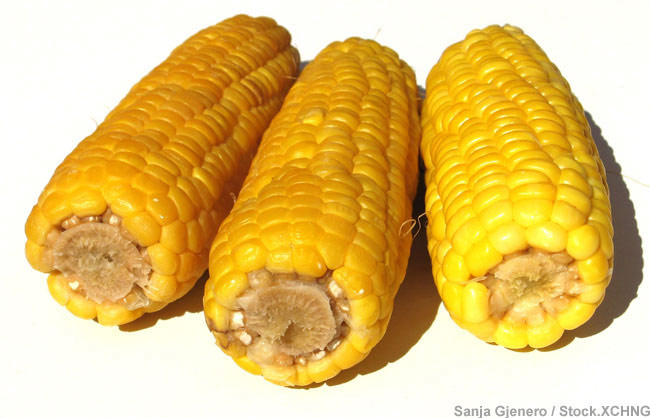Ethanol: Energy Panacea or False Promise?

Now that experts know how to convert prairie grass and leftover lumber into ethanol, six biorefineries scheduled for completion within five years could help the United States produce 130 million additional gallons of the fuel per year.
Ethanol, more commonly known as drinking alcohol, is touted by some as a viable alternative fuel for vehicles. Although its energy content is roughly two-thirds that of gasoline by volume, ethanol is increasingly flowing into gas tanks, with some one out of every eight gallons of gas sold in the United States containing 8 to 10 percent ethanol.
Yet there is heated debate among scientists as to whether or not ethanol really is good for the environment.
Studies hint, for instance, that ethanol might guzzle more energy during its manufacture than it provides, and that it might strain valuable water resources. Recent findings also suggest fuels high in ethanol may pose an equal or greater risk to public health than regular gasoline. Corn ethanol and E85
Unlike gasoline, ethanol is made renewably, from plants, which naturally soak up the greenhouse gas carbon dioxide. Ethanol production and consumption might therefore release less carbon dioxide into the atmosphere than gasoline use does.
In the United States, ethanol is most often made from corn. Some 13 percent of the U.S. corn crop was devoted to making ethanol in 2004. "There are certainly benefits with ethanol if you're a farmer in terms of subsidies," said Stanford atmospheric scientist Mark Jacobson.
E85, a fuel blend of 85 percent ethanol and 15 percent gasoline, could power millions of flexible-fuel vehicles already on the roads and is available at more than 1,000 service stations.
Get the world’s most fascinating discoveries delivered straight to your inbox.
However, the U.S. supply of ethanol is small when compared with gasoline. The United States currently uses roughly 140 billion gallons of gasoline a year, more than any other country. In contrast, the country produced roughly 4 billion gallons of ethanol in 2004. Most stations carrying E85 are in the Midwest, and the fuel is rare and expensive in the rest of country.
Although the six biorefineries scheduled for completion by 2011 won't by themselves add great volumes to existing U.S. ethanol production, they are part of a strategy to demonstrate that ethanol can be generated more cost-effectively from the hundreds of millions of tons of cellulose in plant scrap that would otherwise go to waste.
"Those could show that you can really bring the cost of ethanol down," chemical engineer Bruce Dale at Michigan State University told LiveScience. "I believe we'll demonstrate in less than five years that we can make ethanol from cellulose for in the neighborhood of $1.20 a gallon. Given that gas is now about $3 a gallon lots of places, I think people will fall all over themselves trying to put together supply chains to make cellulosic ethanol."
Energy for making it
Critical points of contention over ethanol regard whether or not creating it requires more energy than consuming it gives off. Although a great deal of energy that goes into ethanol comes from the sun, much human effort is also required when it comes to processing raw plant material to make ethanol. And there are the efforts that go along with farming and pesticide and fertilizer use.
Research from applied economist Jason Hill at the University of Minnesota and his colleagues found you do get more energy from ethanol than you put in it, some 25 percent more. "So there is the benefit of energy gain there," Hill said in a telephone interview.
However, research by chemical engineer Tad Patzek at the University of California, Berkeley and others finds you get less energy from ethanol than you put in it, returning just 26 percent of the energy invested into making the fuel.
"Ethanol has this false promise of satisfying our transportation fuel needs," Patzek said.
Also, ethanol may not cut down on carbon dioxide emissions as much as hoped. Energy expert Alexander Farrell at the University of California, Berkeley and his colleagues found that replacing gasoline with corn ethanol would reduce a car's total greenhouse gas emissions by only about 13 percent, since creating ethanol in itself produces a lot of pollution.
Dale contended that cellulosic ethanol could even cut total greenhouse gas emissions by 90 percent. However, Patzek suggested ethanol manufacture and consumption could release more greenhouse gases into the air than gasoline usage does.
"A problem I see is the 'nirvana fuel syndrome,' where there's some fuel with no problems," Dale said. "I would say instead, 'What problems does this fuel have compared with others?' I would say that ethanol as a replacement for gasoline is in almost every measurement far superior to gasoline, in terms of climate effects and getting away from the screw situation you have geopolitically with oil."
Patzek remained unconvinced. "Not only can ethanol not supply all of the nation's fuel demand, it can't even supply a small fraction of it," he said. "That's the bottom line."



